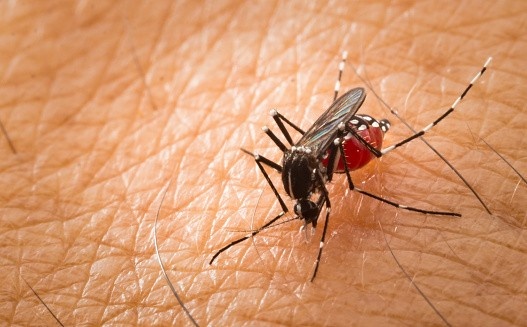When addressing mosquito-borne diseases, Professional Mosquito Control Services often employ vector control strategies. Vector control focuses on managing and reducing the populations of mosquitoes and other pests that can transmit diseases like malaria, dengue fever, and Zika virus. Understanding the strategies involved can help you appreciate their role in public health and how they contribute to a safer environment.
Key Strategies in Vector Control
Vector control strategies involve a mix of approaches to manage mosquito populations and prevent the spread of diseases. Here’s an overview of the main strategies used:
1. Environmental Management
Environmental management involves modifying or controlling the environment to reduce mosquito breeding sites and habitats. This is a proactive approach to prevent mosquito populations from increasing.
- Eliminating Standing Water: Mosquitoes lay eggs in stagnant water. Removing or draining sources of standing water, such as in old tires, buckets, and clogged gutters, is crucial for preventing mosquito breeding.
- Improving Drainage: Ensuring proper drainage in areas where water tends to accumulate helps to reduce potential breeding sites. This includes maintaining and repairing drainage systems to prevent water from pooling.
- Landscaping: Proper landscaping can help minimize mosquito habitats. Trim overgrown vegetation and ensure that water does not collect in garden beds or other areas.
2. Biological Control
Biological control uses natural organisms to reduce mosquito populations. This method focuses on leveraging the natural predators of mosquitoes to manage their numbers.
- Introducing Predators: Fish like Gambusia (mosquito fish) and certain insects such as dragonflies feed on mosquito larvae. Introducing these predators into water bodies can help control mosquito populations.
- Using Larvicides: Biological larvicides, such as Bacillus thuringiensis israelensis (BTI), target mosquito larvae in water. These products contain bacteria that produce toxins harmful to mosquito larvae but safe for other wildlife.
- Promoting Natural Predators: Encouraging birds, bats, and other animals that feed on adult mosquitoes can help control mosquito populations naturally.
3. Chemical Control
Chemical control involves the use of pesticides to kill mosquitoes. This method can be effective but should be used carefully to avoid negative impacts on the environment and non-target species.
- Adulticides: These are chemicals used to kill adult mosquitoes. They can be applied through fogging or spraying. Adulticides are typically used during mosquito outbreaks or in areas with high mosquito activity.
- Larvicides: These are chemicals used to target mosquito larvae before they become adults. They can be applied to standing water where mosquitoes breed to prevent larvae from maturing.
- Space Sprays: Space sprays involve dispersing insecticides in the air to kill mosquitoes on contact. This method is often used in areas with high mosquito populations or during disease outbreaks.
4. Personal Protection
Personal protection strategies focus on reducing individual exposure to mosquitoes and minimizing the risk of mosquito-borne diseases.
- Using Repellents: Applying mosquito repellents containing DEET, picaridin, or oil of lemon eucalyptus can help protect individuals from mosquito bites.
- Wearing Protective Clothing: Wearing long-sleeved shirts, long pants, and socks can reduce exposed skin and help prevent mosquito bites, especially during peak mosquito activity times.
- Installing Screens: Installing screens on windows and doors can keep mosquitoes out of homes and other indoor areas. Ensure that screens are in good repair and free of holes.
5. Public Awareness and Education
Educating the public about mosquito control and prevention is essential for effective vector control. Awareness programs help individuals understand how to reduce mosquito breeding sites and protect themselves from mosquito bites.
- Community Outreach: Conducting community outreach programs to inform residents about the importance of removing standing water and using personal protection measures can enhance vector control efforts.
- Educational Campaigns: Public health campaigns can provide information about mosquito-borne diseases, symptoms, and prevention methods. These campaigns help increase public knowledge and encourage proactive behaviors.
- Engaging Local Organizations: Partnering with local organizations, schools, and businesses to promote mosquito control practices can help spread awareness and encourage community involvement.
6. Surveillance and Monitoring
Regular surveillance and monitoring are crucial for tracking mosquito populations and identifying potential disease outbreaks. This information helps guide vector control efforts and ensures timely responses.
- Mosquito Trapping: Setting up mosquito traps helps monitor mosquito populations and identify species present. This data is used to assess the effectiveness of control measures and adjust strategies as needed.
- Disease Surveillance: Monitoring for mosquito-borne diseases in both humans and mosquitoes helps track outbreaks and identify areas where additional control measures may be needed.
- Data Analysis: Analyzing data from surveillance efforts helps guide vector control decisions and improve strategies over time.
Conclusion
Vector control strategies play a crucial role in preventing mosquito-borne diseases by managing mosquito populations and reducing the risk of transmission. By combining environmental management, biological control, chemical control, personal protection, public awareness, and surveillance, these strategies provide a comprehensive approach to mosquito control. Effective implementation of these methods can lead to a significant reduction in mosquito-borne diseases, improving public health and enhancing the quality of life in affected areas.
